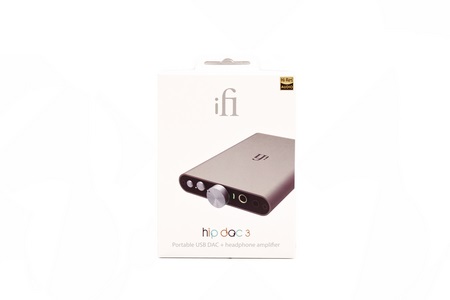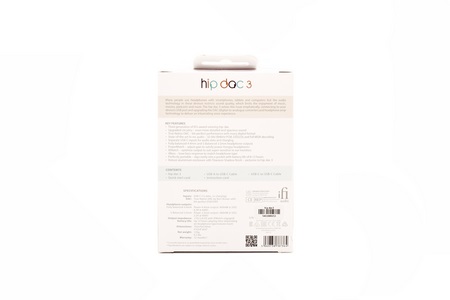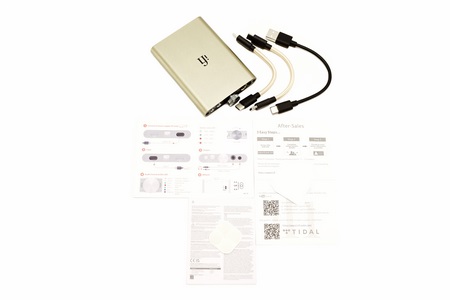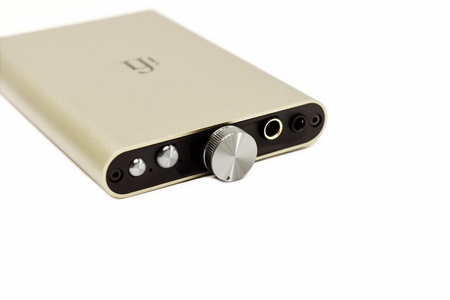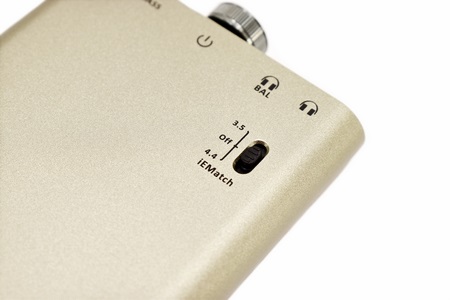INTRODUCTION

Battery powered portable DACs have been gaining popularity this past decade and well, if you're a really demanding consumer they are the easiest way to improve audio on the go. Yes, the good models are not that small since they do require larger rechargeable battery packs (among other electronics) but still "sacrificing" your entire pocket to get the best audio possible out of your portable device is not a serious drawback. The only question is which battery powered portable DAC to get your hands on and well, you can't go wrong picking one by the top manufacturers in the market. iFi audio is certainly among them and today with me i have their latest hip dac 3 Portable USB DAC & Headphone Amplifier.
iFi audio is a UK based manufacturer of desktop and portable high-end audio equipment. Innovative high-end audio should be available to everyone, everywhere, so iFi uses the latest technology, materials and consumer feedback to provide an audiophile quality listening experience at an affordable price. You listen to music, we listen to you.
The hip dac 3 is the successor to the award winning hip dac and hip dac 2 flask-shaped DACs released in 2019 and 2021 respectively which this time over is offered with a housing made of aluminum and with their new titanium shadow color (according to them it’s exclusive to the hip dac 3). Inside the compact aluminum chassis iFi audio has placed a 16-core XMOS low-latency processor (2000MIPS/512KB) together with a Burr Brown true-native DAC (true balanced circuit design), custom OV OP amp, TDK COG capacitors, analogue volume pot and an 2200mAh lithium polymer rechargeable battery pack. This hardware configuration gives the hip dac 3 decoding support for Hi-Res PCM/DXD content of up to 32-bit/384kHz and of course up to DSD256 (MQA format is also supported). iFi audio has also equipped the hip dac 3 with a power knob, LEDs (change color according to audio format, sampling rate and battery life), 3.5mm port (280mW at 32Ω), balanced 4.4mm port (400mW at 32Ω) and two USB-C ports (one for audio and one for device charging – DC 5V). Finally, iFi audio has added several of their technologies to the hip dac 3 including IEMatch (audio normalization), PowerMatch (higher gain) and an XBass (richer bass). Not having tested the hip dac 2 means I can’t really do a direct comparison with the hip dac 3 but still let’s see what it’s capable of.
SPECIFICATIONS AND FEATURES

PACKAGING AND CONTENTS
iFi audio ships the hip dac 3 inside a small white box that has a product picture at the front along with their logo, Hi-Res logo and the product name.
Some of the main product features are printed on the right side of the box.
The full product features and specifications lists are printed at the rear of the box.
Along with the hip dac 3 inside the box you’ll also find a USB-C to USB-C cable, USB-C to iPhone cable, USB-A to USB-C cable, 4 round silicon feet, iFi audio sticker, after sales paper, warranty information paper, MQA information paper (will need different firmware for this) and the user manual.
THE HIP DAC 3
The 135g heavy flask like aluminum enclosure of the hip dac 3 measures 102mm in length, 70mm in width and 14mm in thickness.
Left to right at the front of the hip dac 3 we find the PowerMatch and XBass buttons and LEDs, analogue volume control knob (audio format and battery LEDs are placed left and right), 4.4mm balanced output (400mW at 32Ω) and the 3.5mm output (280mW at 32Ω).
iFi audio has printed their logo at the top of the enclosure.
Moving at the rear we find the USB-C data input, 2D barcode, Hi-Res logo and the USB-C 5V charging input.
Looking at the other side we see that all ports and buttons are tagged and of course we also find the IEMatch switch.
As with past models the hip dac 3 has a single firmware file available online inside which iFi audio has placed 3 different versions (7.4 with MQA support, 7.4b without MQA support and 7.4c with MQA support and GTO filter).
CONCLUSION
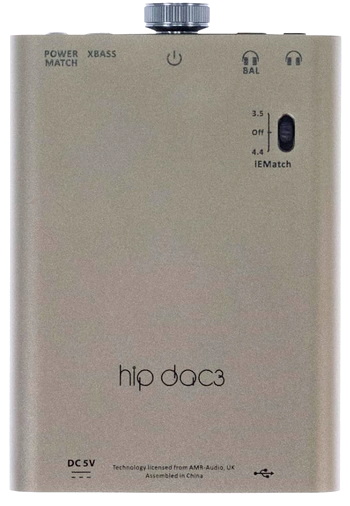
From overall audio detail (mids stand out more than highs) and separation to rich bass levels (especially when using XBass) and a flat audio curve which makes the hip dac 3 easier to tweak based on what music genre you listen to everything checks out. Yes, in terms of soundstage it may not be the widest I’ve heard to date from a portable DAC but it's still very accurate/detailed. Unfortunately, not having used either the original hip dac or the hip dac 2 I can’t do a direct comparison but overall, the hip dac 3 offers detail with plenty of volume. Now, iFi audio claims that you can use the hip dac 3 for up to 12 hours but that largely depends on two things, your headphones and volume levels. For example, I used the FiiO FT3/FT5/FA9 and the Meze 109 Pro for my tests and well, I never recorded over 10 hours with 8+ hours being the usual number. That being said, even 8+ hours is a great number for a portable DAC, I mean, not like you’ll be on the road for that long without access to charging. I feel that I also need to point out build quality and even though the hip dac 3 is certainly nothing special its aluminum enclosure is very well crafted and should easily outlast your smartphone and/or music player.
As I type these lines the hip dac 3 by iFi audio retails for USD199 inside the USA (Amazon.com) and for 199Euros inside the EU (Amazon.de) a price tag which is more or less balanced for one such product. Overall, I don’t have any complaints from the hip dac 3, yes, the XBass feature is not perfect (bass sometimes sounds a bit dull) and having to choose one of 3 firmware versions to get specific features is certainly not ideal (a switch from which you could choose the preferred mode would work much better) but at the end of the day it does deliver as advertised and for that it gets the Golden Award.

PROS
- Build Quality (Aluminum Enclosure)
- 16 Core XMOS Processor & Burr Brown True Native DAC
- Supported Formats (MP3, PCM/DXD 32-bit/384kHz, DSD 64/128/256, MQA)
- Audio Quality (Detail / SoundStage)
- Battery Life (Up To 12 Hours)
- 3.5mm & 4mm Balanced Outputs
- 2 USB C Ports (Data Input & Charging)
- IEMatch, PowerMatch & XBass Technologies
CONS
- Different Firmware Versions
- XBass (Doesn’t Work Well At Times)

 O-Sense
O-Sense





